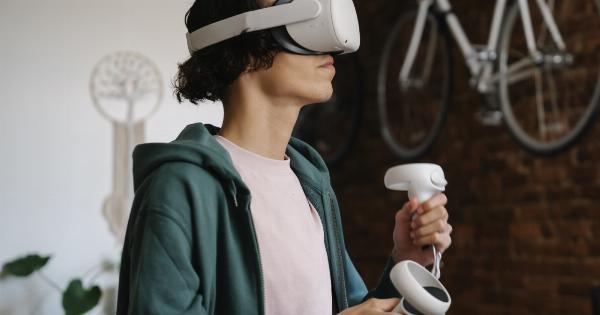Glaucoma is a group of eye diseases characterized by damage to the optic nerve, leading to progressive vision loss and ultimately blindness if left untreated. It affects millions of people worldwide and is a leading cause of irreversible blindness.
What is Glaucoma?
Glaucoma is often referred to as the “silent thief of sight” because it usually progresses gradually and without noticeable symptoms until significant vision loss has occurred.
It affects the optic nerve, which is responsible for transmitting visual information from the eyes to the brain. The development of glaucoma is typically associated with increased intraocular pressure (IOP).
The Role of Intraocular Pressure
Intraocular pressure refers to the fluid pressure inside the eye. In a healthy eye, the production and drainage of fluid called aqueous humor maintains a balanced pressure.
However, in glaucoma, there is a disruption in the normal drainage mechanisms, resulting in increased IOP. The elevated pressure can damage the delicate fibers of the optic nerve, leading to vision loss.
The Different Types of Glaucoma
There are several types of glaucoma, including:.
- Primary open-angle glaucoma (POAG): This is the most common type and typically develops gradually with no symptoms in the early stages.
- Angle-closure glaucoma: This type occurs when the drainage angle between the iris and cornea becomes blocked, causing a sudden increase in IOP and severe symptoms.
- Normal-tension glaucoma: In this form of glaucoma, damage to the optic nerve occurs despite normal IOP levels.
- Secondary glaucoma: This type develops as a result of another underlying condition, such as trauma, inflammation, or certain medications.
Understanding Glaucoma Vision
Glaucoma primarily affects peripheral vision, the visual field outside the central area focused on when looking straight ahead. As the disease progresses, the field of vision narrows, resembling looking through a tunnel.
This condition is known as tunnel vision.
Simulating glaucoma vision can help individuals understand the visual distortions experienced by glaucoma patients.
There are various tools available that mimic the effects of glaucoma on vision, providing a glimpse into the challenges faced by those living with the disease.
Common Visual Symptoms
Glaucoma causes specific visual symptoms that can vary depending on the type and stage of the disease. Some common symptoms and visual changes associated with glaucoma include:.
- Blurred vision: Many glaucoma patients experience blurred or hazy vision, making objects appear out of focus.
- Halos around lights: Glaucoma can cause the perception of halos or circles around lights, especially in low-light conditions.
- Increased difficulty with peripheral vision: As mentioned earlier, glaucoma affects peripheral vision, resulting in blind spots and decreased awareness of surroundings.
- Poor contrast sensitivity: Glaucoma can lead to difficulties distinguishing objects from their background due to reduced contrast sensitivity.
- Impaired color vision: Some individuals with glaucoma may experience an altered perception of colors or difficulty differentiating specific hues.
Simulation Tools
Advancements in technology have led to the development of simulation tools that allow individuals to experience the visual distortions caused by glaucoma:.
- Glaucoma Visual Field Simulator: This simulator replicates the changes in the visual field caused by glaucoma. It can be accessed online, providing users with an interactive experience to understand how glaucoma affects vision.
- Virtual Reality (VR) Glaucoma Simulation: VR technology is utilized to immerse users in a virtual environment that mimics the visual impairments associated with glaucoma. This hands-on approach allows for a more realistic and interactive learning experience.
- Simulated Vision Filters: These filters can be applied to regular eyeglasses or virtual reality headsets to demonstrate the specific visual impairments caused by glaucoma. They alter contrast, blur vision, and create blind spots to simulate the challenges faced by individuals with glaucoma.
The Impact of Simulation
By experiencing the visual distortions caused by glaucoma firsthand, individuals gain a deeper understanding of the challenges faced by glaucoma patients.
Simulation tools help improve empathy and foster a greater appreciation for the importance of early detection, regular eye exams, and adherence to prescribed treatments.
Glaucoma Treatment and Management
While there is currently no cure for glaucoma, early detection and appropriate treatment can slow down or halt its progression, preventing further vision loss. Treatment options may include:.
- Medication: Eye drops or oral medications may be prescribed to lower IOP by reducing the production of aqueous humor or improving its drainage.
- Laser therapy: Laser procedures can increase the drainage of aqueous humor or reduce its production, helping to control IOP.
- Surgery: In more severe cases, surgical interventions may be necessary to create a new drainage channel or implant a drainage device to regulate IOP.
Conclusion
Understanding glaucoma vision through simulation allows individuals to gain a firsthand experience of the visual distortions caused by this progressive eye disease.
By raising awareness and promoting empathy, these simulations can contribute to the early detection, proper management, and better support for individuals living with glaucoma.





























